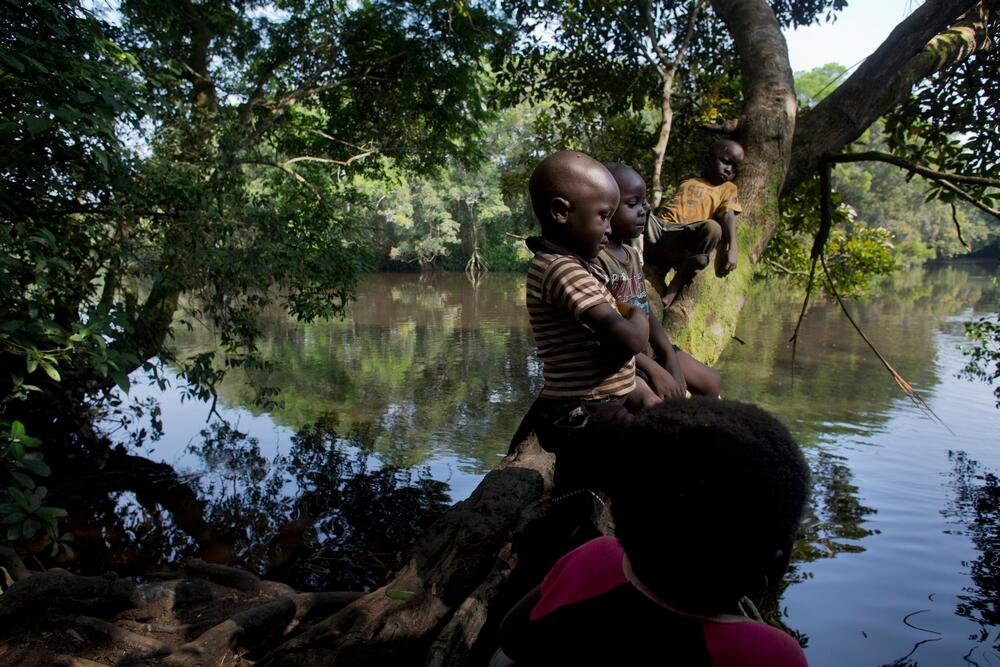Geographical Information Systems: Explained
In a complex and chaotic humanitarian crisis, our teams need to reach communities with the exact medical aid they need.
But, working in remote locations, against instability or evolving epidemics, there’s often one essential tool that’s surprisingly difficult to find: a map.
What is GIS?
Geographical Information Systems, also known as GIS, is a scientific field that uses data to represent and understand the world in terms of space and location.
GIS analyses spatial information to generate specialised maps and insights that help our teams respond to an emergency, no matter where it occurs.
How does MSF use GIS?
It may sound surprising, but Médecins Sans Frontières/Doctors Without Borders (MSF) works in many places where maps or data covering the area either don’t exist, are long out of date or are perhaps only partially complete.
But our medical teams need highly detailed maps and hyper-local data to reach people in need. This missing information can ultimately be the difference between life and death in a healthcare crisis.

Get closer to the Frontline
Get the latest news, stories and updates, straight to your inbox.
We have small teams of GIS experts who work to solve this problem and help us understand fundamental information such as:
- Access to healthcare: Where people live in relation to healthcare facilities
- Environmental threats: Up-to-date maps of communities vulnerable to natural disasters
- Logistics: The set-up and efficiency of our supply chains
- Epidemiology: How epidemics may spread through communities, as well as mortality and morbidity surveys (how often deaths and illnesses occur)
- Security: Vital overviews of security threats in unstable regions
GIS and epidemics
When cases of a disease begin to spike, GIS can be extremely helpful to understand where patients are becoming infected, how medical teams can reach them and the scale of supplies needed.
This crucial information can help track the progress of the disease and ultimately beat it.
When a mass vaccination campaign is called for to help stop an epidemic, our teams need to coordinate with other organisations to protect a significant proportion of the community and halt the spread.
In the case of a highly-infectious disease such as measles, a minimum of 90 percent of all children in any given population need to be vaccinated for the campaign to be effective.
However, census data may be at least 10 years out of date, or violence and instability may mean that entire villages have moved.
In these cases, GIS teams will map an area to help vaccination teams accurately understand the scale of the challenge and reach as many people as possible.
Vector-borne diseases are infections caused by parasites, viruses or bacteria that are transmitted to humans by animals.
The most well-known of these is malaria, carried by infected mosquitos.
GIS plays a vital role in helping teams understand the environmental factors that could impact species and drive spikes in infections rates, so they can better plan preventative measures.
In Maniema, in the east of the Democratic Republic of Congo, a community was suffering from a prolonged outbreak of sleeping sickness – a deadly disease that is spread by one species of fly called the tsetse.
GIS specialists joined medical teams going from village to village to treat patients, collecting data on the number of cases and the surrounding forest habitat. This was used to generate an accurate disease map based on the known distances being travelled by the flies.
MSF teams were then able to understand the risks faced by different communities, as well as use the data to coordinate more focused screening and treatment in high-risk villages.
Join us: Help MSF map new areas
Join the thousands of volunteers already mapping the most vulnerable parts of the world by getting involved with the Missing Maps project.
Missing Maps is an open, collaborative initiative founded by MSF, the British Red Cross, the American Red Cross and the Humanitarian OpenStreetMap Team.
The GIS project is powered by volunteers tracing areas of concern to us across the world. Using aerial photographs as a backdrop, road networks, buildings and landmarks are traced to build a line drawing of the area, which is then confirmed locally.
The first stage of this process can be done by anyone, from anywhere with some dedication and training. You just need to sign up to OpenStreetMap and spend some time learning how to use the software.
Or, you can download MapSwipe, an open-source mobile app that contributes to the Missing Maps project by verifying satellite imagery on which to base maps.



